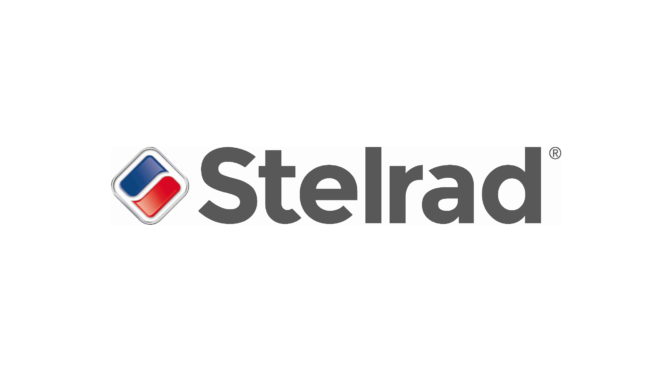Monthly Archives: January 2015
Klober roof vents at the pinnacle of new development
Story
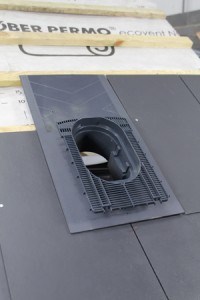 Roof ventilation market leader Klober has launched the 20k tile vent. This will not only enable far fewer vents to be used on a roof but fulfil the need for a bigger aperture required for MHVR. In addition to a tile vent, a slate vent is available for use with natural and man-made slates. Both have been designed for universal use and can be fitted with a 150mm adaptor.
Roof ventilation market leader Klober has launched the 20k tile vent. This will not only enable far fewer vents to be used on a roof but fulfil the need for a bigger aperture required for MHVR. In addition to a tile vent, a slate vent is available for use with natural and man-made slates. Both have been designed for universal use and can be fitted with a 150mm adaptor.
View Klober's profile:
CARE HOME BENEFITS FROM LEADING LST RADIATOR RANGE
Story
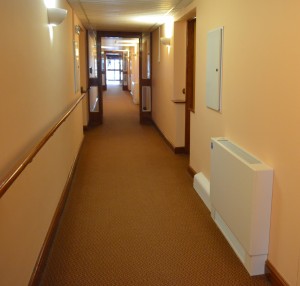 An established care home in Swindon is a warmer and safer place thanks to the specification of Stelrad LST radiators as part of an overall refurbishment project. The Ridings Care Home provides 32 self-contained flats offering a mix of one and two bedroomed accommodation, for a mix of active elderly individuals and couples, some with 24 hour care needs.
An established care home in Swindon is a warmer and safer place thanks to the specification of Stelrad LST radiators as part of an overall refurbishment project. The Ridings Care Home provides 32 self-contained flats offering a mix of one and two bedroomed accommodation, for a mix of active elderly individuals and couples, some with 24 hour care needs.
The care home – one of many owned and managed by The Guinness Partnership – used to feature an ageing electric underfloor heating system with electric immersion heaters providing hot water. As well as being ‘past its sell by date’, it was expensive to run option and needed upgrading and replacing with modern energy efficient and reliable heating options. Hewer FM, based in Gloucester was selected to replace the heating for the care home and the old system was ripped out and replaced by a traditional wet heating system using three modern gas fired condensing boilers to provide the heating source, and two further gas boilers operating in conjunction with solar thermal and solar PV panels to preheat the cylinder and provide hot water.
Because of the differing levels of disability and care requirements in the home, LSTs – low surface temperature radiators – were selected. These comply with the strict requirements of the NHS Guidance Note for ‘Safe hot water and surface temperature’ and can be installed in domestic, commercial and public buildings running heating systems with total public safety assured. 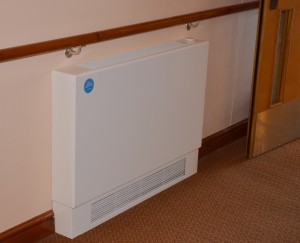 The surface temperature of these LSTs will never exceed 43°C. It’s for buildings such as these that Stelrad’s LST range has been designed, to ensure that elderly and vulnerable people cannot suffer the serious dry burns that are possible from falls against standard radiators where the surface temperatures can exceed 70 degrees Celsius.
The surface temperature of these LSTs will never exceed 43°C. It’s for buildings such as these that Stelrad’s LST range has been designed, to ensure that elderly and vulnerable people cannot suffer the serious dry burns that are possible from falls against standard radiators where the surface temperatures can exceed 70 degrees Celsius.
In all, more than eighty Stelrad LSTi Plus K2 radiators were supplied for this project to heat the flats, the corridors and other public areas of the care home and The Guinness Partnership is very happy with its investment so far: “When you are providing a home for elderly tenants, warmth and safety are the two key features of the property and the Stelrad LSTi’s, as part of this new heating system, offer both perfectly,” says The Guinness Partnership’s Oliver Wilkinson. “As well as being effective and safe, they are aesthetically pleasing and blend in nicely in both the rooms and the wider care home – the covers for the radiators look good and have rounded edges to ensure there are no sharp edges to touch or fall against and have the added benefit of being finished in a long-lasting anti-bacterial coating which is perfect for an environment such as this. The smooth fronted casings are easy to keep clean and hygienic.”
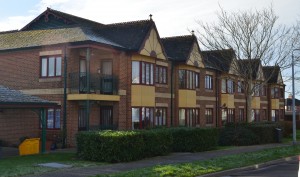 HewerFM’s John Hendzel was the contract manager responsible for the Ridings project: “The LST i Plus from Stelrad is supplied with the addition of an integral remote sensing thermostatic valve to allow adjustment of room air temperature, making it even more energy efficient than other LST radiators, as well as offering an arthritic adaptor that makes it far easier for older people who may have grip problems to adjust the level of heat in their rooms. There are also additional components to discourage unauthorised tampering for the radiators situated in public areas of the building. Importantly the LST i Plus features curved casing edges which ensures no square edges to damage anyone falling against it. The design has been well thought through and provides an ideal solution for heating in a property such as this one.”
HewerFM’s John Hendzel was the contract manager responsible for the Ridings project: “The LST i Plus from Stelrad is supplied with the addition of an integral remote sensing thermostatic valve to allow adjustment of room air temperature, making it even more energy efficient than other LST radiators, as well as offering an arthritic adaptor that makes it far easier for older people who may have grip problems to adjust the level of heat in their rooms. There are also additional components to discourage unauthorised tampering for the radiators situated in public areas of the building. Importantly the LST i Plus features curved casing edges which ensures no square edges to damage anyone falling against it. The design has been well thought through and provides an ideal solution for heating in a property such as this one.”
Each Stelrad LST emitter provides high outputs through convection for outstanding heat performance and is guaranteed to perform to a maximum working pressure of 116 psi (8 bar) and conform to BE EN 442 – the European standard for radiators.
Full details of the range of Stelrad LSTs can be found at its website at www.stelrad.com.
View Stelrad's profile:
PA Energy use Micronics Ultrasonic, Clamp-On Flow & Heat Meters to monitor and improve water and energy saving projects.
Story

Monitoring the performance of water and energy saving initiatives is essential to demonstrate the benefits, ensuring that systems operate to specification and are tuned for maximum savings to deliver fast pay-back on investments. And London based PA Energy who specialise in the supply, installation and ongoing monitoring of turnkey sub-metering systems have used Micronics ultrasonic, clamp-on flow and heat metering products to good effect on a wide range of water and or energy saving projects.
The projects have included rainwater harvesting, fuel cell and solar/thermal installations on commercial buildings in the London area and the simple clamp-on, non-invasive solutions from Micronics have offered significant advantages over the traditional alternative of in-line meters and their requirement for system drain-down, pipe cutting, re-filling systems and the associated costs, which are all avoided by the use of a clamp-on solution.
For the rainwater harvesting project a claim for a reduction in the sewage charge is being developed by using a Micronics U3000 to demonstrate how much rainwater is being dumped to sewage by metering the amount of water being pumped into a grey water tank in comparison to the boosted cooling water entering the tank. Another application was measuring the LTHW heat flow from a fuel cell calorifier again with a U3000 to demonstrate the performance of the fuel cell process. And yet another was monitoring the heat transfer/performance from a solar/thermal panel by measuring the water /glycol mix and differential flow and return temperature with a heat calculator to calculate heat transfer to the buffer vessel heat exchanger to demonstrate the performance of the solar/thermal system i.e. that it was performing to specification.
PA Energy selected clamp-on ultrasonic flow meters for the clear advantages of being low cost, non disruptive and simple to install in comparison to in-line meters and Micronics were selected as the supplier due to a combination of their long-term experience with non-invasive, clamp-on technology, product performance and pre-order assistance.
PA’s Managing Director – Percy Albuquerque says “The Micronics clamp-on flow meters have proved to be an effective component in providing accurate water flow and heat measurement data for our web based aM&T plus data analysis services. The product performance has been good, even on partially filled pipes and on the rare occasions that we have had application problems the Micronics support has been good.”
The potential for similar use is significant and PA’s experience is an example of how clamp-on, ultrasonic technology can be successfully implemented to gather information and demonstrate the performance of water and energy saving installations. For further information call +44(0)1628 810456, or visit www.micronicsflowmeters.com.
View Micronics's profile:
Heat Recovery put to Good Use
Story
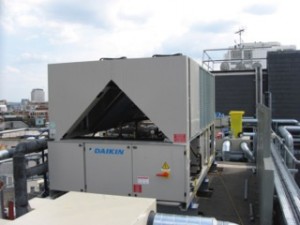 In HVAC system terms, heat recovery is a process of capturing, and putting to good use, heat that would, in the normal course of events, be “rejected to atmosphere”. One example is heat energy that is absorbed and rejected by an air conditioning system during its cooling cycle. This, to all intents and purposes, is free heat that can be successfully redirected for space heating, domestic water heating or any other process that requires heat.
In HVAC system terms, heat recovery is a process of capturing, and putting to good use, heat that would, in the normal course of events, be “rejected to atmosphere”. One example is heat energy that is absorbed and rejected by an air conditioning system during its cooling cycle. This, to all intents and purposes, is free heat that can be successfully redirected for space heating, domestic water heating or any other process that requires heat.
Heat recovery is being successfully applied in all types of buildings, schools, manufacturing plants and office buildings. It typically provides a very attractive return on investment for building owner/operators.
Hotels with their relatively high year-round internal cooling loads combined with high hot water demand are excellent opportunities for “green” heat pump, heat recovery chiller technology.
Importantly, heat pump heat recovery systems can allow for substantially downsizing or even eliminating fossil fuel, combustion based heating equipment such as gas boilers. This was the case in a project undertaken and described here by the Daikin Distributor, Space Airconditioning plc.
Space Air has enjoyed a partnering agreement with a leading UK hotel group for over 20 years and, for a refurbishment project in the heart of London, supplied a 320kW Daikin air-cooled chiller with a heat recovery option. In addition to satisfying specific, almost continuous cooling demands, this chiller also provides warmed water to 4 x 500 litre indirect DHW cylinders.
The hotel’s hot water supply is pre-heated by the chiller’s heat recovery process; this in turn dramatically reduces the output required of new high efficiency gas fired water boilers.
The result is significant kW savings in energy and huge reductions in mains gas consumption.
The Hotel Group had committed to refurbish the Covent Garden Hotel including all guest bedrooms as well as function rooms, reception areas and restaurants.
Space Air technicians in conjunction carried out a survey with the hotel’s maintenance company. It was determined that whilst the existing Air Handling Unit serving the common areas and restaurants etc. was in good condition and could be re used, an existing air cooled chiller needed replacing, due to the fact that it was designed to operate with R22 refrigerant (the use of which for service purposes will be banned from 2015) and was in a state of disrepair with only one working compressor circuit.
The concept that a new Daikin Chiller to replace the old machine, could also provide cost effective heat recovery features, created interest because the hotel’s existing gas boilers were due to be replaced.
Space Air presented the features and specification of the Daikin Heat Recovery system to the client. Space Air was able to illustrate cost savings the Heat Recovery option would provide, and combined with the reduced costs for the smaller gas boilers, substantial reductions in the hotel’s hot water services operational costs could be realised.
The Hotel group decided it made good financial sense to proceed with the Heat Recovery option.
The new Daikin heat recovery chiller operates 24/7 and an existing back up (cooling only) Daikin chiller is only used in case of unlikely
failure. This means the new chiller provides virtually continuous pre-heated water for the DHWS.
On a seasonal basis it has been calculated that the chiller will produce an average of 236.6kW of hot water, free of charge. This takes into account the chiller operating for 24 hours, 7 days a week, 365 day a year (8760 hours).
Four x 500 Litre indirect cylinders provide pre-heated water on a separate circuit to the secondary heat exchanger in the basement, which serves the main feed to the showers, and DHWS for the hotel guestrooms.
Allowing for losses in the cylinders and pipework etc., the system achieves delta T of approximately 20°C. So the mains water supply to the DHWS heat exchanger is increased by this temperature rise resulting in a much lower demand than usual on the new gas boilers.
To put this into perspective the cost to heat 2000L of water based on a ∆T of 20°C with a gas boiler was calculated and compared with the ‘extra’ cost of providing a heat recovery option on the chiller price to perform the same function.
Approx. 46.44kWh (per hour) of energy is required. Over one year based on 24/7, 365 days (8760 hours) operation and with gas at 4p per kWh, the cost of gas would be approx. £16k.
The premium cost for the optional HR circuit on the Daikin Chiller plus the required tanks, pumps, pipework etc. Installed = £30/40k (Estimated). This equates to a payback period on the investment of less than 3 years.
So far the client is delighted with the cost savings achieved and is looking to apply similar heat recovery principles in more of his property portfolio.

